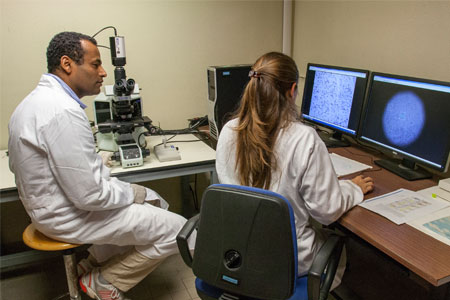- Authors:
-
Liberati, C; Brigadoi, G; Gres, E; Barbieri, E; Cavagnero, F; Maestri, L; Trivellato, S; Zenere, A; De Pieri, M; Chiara, C Di; Mengato, D; Venturini, F; Canale, E De; Vecchio, C Del; Tessari, A; Tosoni, A; Zaggia, C; Contessa, C; Giaquinto, C; Carrara, E; Tacconelli, E; Amigoni, A; Donà, D
- Title:
-
Revisiting Antimicrobial Stewardship in the Paediatric Intensive Care Unit: Insights from an Unconventional Approach
- Year:
-
2025
- Type of item:
-
Articolo in Rivista
- Tipologia ANVUR:
- Articolo su rivista
- Language:
-
Inglese
- Referee:
-
No
- Name of journal:
- Journal of Hospital Infection
- ISSN of journal:
- 0195-6701
- N° Volume:
-
160
- Page numbers:
-
53-59
- Keyword:
-
Antimicrobial stewardship; Handshake stewardship; Paediatric intensive care unit
- Short description of contents:
- Background: Patients admitted to the Paediatric Intensive Care Unit (PICU) constitute a high-risk group with a heightened likelihood of receiving inappropriate antimicrobial prescriptions. This study describes an Antimicrobial Stewardship Programme (ASP) in the PICU of a tertiary hospital in Italy. Method: A pre-post quasi experimental study was conducted between 01/01/2019 and 31/12/2022 in the PICU of the Department for Women's and Children's Health, University Hospital of Padua. The ASP intervention started in February 2021 by a multidisciplinary team using the "handshake" approach. The population included all patients admitted to the PICU. The primary outcome was antibiotic consumption measured as days of therapy administered (DOTs)/1000 patient-days. An interrupted time series analysis was used to assess the trend in antibiotic prescribing before and after the intervention. Results: 616 patients (episodes) were admitted in the pre-intervention phase (Jan 2019 - Jan 2021) and 602 patients in the post-intervention phase (Feb 2021 - Dec 2022). For overall antibiotic consumption, the ASP implementation resulted in a significant monthly decrease of 3.0% (p< 0.0001). Monthly reductions for higher consumption antibiotics were: meropenem 4.9% (p=0.009), glycopeptides 3.8% (p=0.014), piperacillin-tazobactam 4.8% (p=0.034). The consumption of third-generation cephalosporins and amikacin did not significantly vary. Conclusions: The ASP intervention was effective in reducing the consumption of antimicrobials in such a complex setting. These results show the importance of antimicrobial stewardship in the scenario of critically ill children.
- Note:
- Epub 2025 Mar 1
- Product ID:
-
144587
- Handle IRIS:
-
11562/1156871
- Last Modified:
-
July 9, 2025
- Bibliographic citation:
-
Liberati, C; Brigadoi, G; Gres, E; Barbieri, E; Cavagnero, F; Maestri, L; Trivellato, S; Zenere, A; De Pieri, M; Chiara, C Di; Mengato, D; Venturini, F; Canale, E De; Vecchio, C Del; Tessari, A; Tosoni, A; Zaggia, C; Contessa, C; Giaquinto, C; Carrara, E; Tacconelli, E; Amigoni, A; Donà, D,
Revisiting Antimicrobial Stewardship in the Paediatric Intensive Care Unit: Insights from an Unconventional Approach
«Journal of Hospital Infection»
, vol.
160
,
2025
,
pp. 53-59
Consulta la scheda completa presente nel
repository istituzionale della Ricerca di Ateneo 








